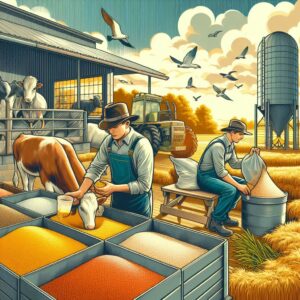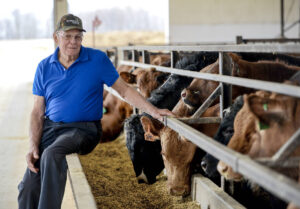What are your top strategies to reduce global warming?
Before I tell you where my focus is and why I want you to consider the following. What is the main contributor to the greenhouse gas effect? What would you think if I said water vapor contributes to up to 80 % of the Greenhouse gas effect and Carbon Dioxide only 11 %?How would you approach reducing global warming if you took the perspective that Greenhouse gases are too much of a good thing in the wrong place?
As water vapour in the atmosphere traps heat, water in soil has a cooling effect and promotes plant growth, which increases evapotranspiration which is also cooling.
The same applies for CO2 in the atmosphere adds to the greenhouse gas effect, however carbon sequestered in the soil from the atmosphere via photosynthesis has many co-benefits to build soil fertility and soil structure so that the soil can retain more water.
Water is involved in 95% of the heat transfer of the planet and so we need to work with the
metric of temperature and not ppm of Carbon dioxide in the atmosphere.
The fixation on carbon emissions has arisen by seeing the rise in CO2 and the Rise in
atmospheric temperature as a causal relationship and not as a symptom of the underlying thermodynamics.
So, consider the following graphs.
What are the more relevant graphs to give us agency in cooling the planet? (See below)


The above tells us that water follows carbon as sure as night follows day and that to cool the planet it
is imperative that ‘we keep all the ground covered all the time’ below perennial grain deep Kernza

The two graphs below have been misconstrued as, correlation equals causation i.e., as CO2 increases so does atmospheric temperature, however, this is a symptom and not the underlying cause. CO2 amplifies the effect of the dominant greenhouse gas water vapor, but the rise in water vapor from increased surface temperatures from deforestation, land clearing, removal of ground cover in cultivation and so on, is what is heating the atmosphere and to a far lesser extent the burning of fossil fuels as CO2 accounts for 11% of greenhouse gas effect
and water vapor up to 80%.
Charles Keeling in 1958 did the initial measurements to show that CO2 was increasing with the burning of fossil fuels , but he set us on the wrong path by making the false assumption that water vapor is so ubiquitous , ephemeral and in constant movement that it cannot be influenced by human activity and furthermore he asserted that it is impossible to be modelled and so it was simplified to fossil fuels as being the cause of increasing average atmospheric temperature and due to historical inertia and funding by governments to keep
things simple it became the dominant narrative to do otherwise would mean not only to reduce fossil fuels but to also change the way agriculture , forestry and intensive animal husbandry was conducted a bridge to far to cross. So, if it can’t be measured it does not exist!
This is critical distinction as to the effect of leaving land exposed of deforestation of overgrazing and the use of the plough and industrialised chemical farming has alter vast amounts of the earths land surface, as the amount of heat reradiated from the surface is = to the surface temperature to the power of 4! as indicated by the photo below.

Source link
2024-11-04 09:18:13
Karl Hoffman is a distinguished agriculturalist with over four decades of experience in sustainable farming practices. He holds a Ph.D. in Agronomy from Cornell University and has made significant contributions as a professor at Iowa State University. Hoffman’s groundbreaking research on integrated pest management and soil health has revolutionized modern agriculture. As a respected farm journalist, his column “Field Notes with Karl Hoffman” and his blog “The Modern Farmer” provide insightful, practical advice to a global audience. Hoffman’s work with the USDA and the United Nations FAO has enhanced food security worldwide. His awards include the USDA’s Distinguished Service Award and the World Food Prize, reflecting his profound impact on agriculture and sustainability.


